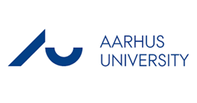GOAL
The overall goal of this project is to provide practitioners, land owners, water managers and relevant authorities with a toolkit to evaluate and promote the implementation of wetlands in agricultural landscapes. This toolkit will support a holistic and multi-functional approach to climate adaptation in line with existing socio-economic and institutional contexts by optimizing the delivery of hydrologically related ecosystem services (ES) with a view to maximizing co-benefits whilst minimizing negative consequences.
With WetKit we aim to contribute to the development of context-sensitive, evidence-based policies and strategies using wetland management to improve landscape resilience to climate-change while maintaining food and fibre production and ES delivery
RESEARCH QUESTIONS
1. What is the impact of constructed agricultural wetlands on hydrologic processes at
a local and a catchment scale?
2. What is the best way to optimize wetland multifunctionality?
3. Controlled and uncontrolled factors influencing wetland hydrologic functioning and
multifunctionality?
4. How are agricultural wetlands perceived by relevant stakeholders?
1. What is the impact of constructed agricultural wetlands on hydrologic processes at
a local and a catchment scale?
2. What is the best way to optimize wetland multifunctionality?
3. Controlled and uncontrolled factors influencing wetland hydrologic functioning and
multifunctionality?
4. How are agricultural wetlands perceived by relevant stakeholders?
BACKGROUND
|
In Sweden, water management in production landscapes (i.e. farms and forests) has focused on drainage to optimize lateral water flows1 and maximize production for food, feed and fiber. This has contributed to the situation today where climate change and land management are leading to increasingly frequent and severe floods and droughts. In relation to that, there is a strong need for a paradigm shift which changes the focus of water management from optimizing lateral flows for rapidly moving water out of the catchment to a more holistic perspective which incorporates both lateral and vertical water fluxes to build a more resilient landscape. The key ambition behind our project is to facilitate this shift, by increasing awareness of the benefits from wetlands, and providing practical evidence-based tools for relevant actors to support wetland creation, restoration and management.
Specifically, the project will identify concrete actions for using wetlands as Nature-based Solutions (NBS) to enhance the vertical components of the hydrological cycle (e.g. storage, infiltration and atmospheric vapor recycling) while limiting lateral flows (e.g., reducing both the total amount of runoff and peak flows while maintaining base flows, Fig. 1). |
Figure 1: The goal is to move from a situation where most precipitation falling in the catchment (blue) moves laterally as surface runoff (red; Panel A) to a situation where wetlands reduce lateral flows while enhancing atmospheric vapour recycling and groundwater infiltration (Panel B). The net effect of these actions is to reduce the height of the flood peak hydrograph and contribute to maintenance of base flows.
|
EXPECTED RESULTS
The expected result of this project is practical guidance and tools for optimal “no regrets” wetland management strategies which will contribute to climate adaptation by maximizing the delivery of hydrologic and other ES while minimizing undesired trade-offs, e.g., GHG emissions and loss of productive land.
The increased landscape resilience accruing from optimal wetland placement and management will help landowners, farmers and water managers to face extreme events and to protect against soil erosion and nutrient loss. By identifying management options which can maximize GHG sequestration, wetlands in agricultural landscapes will decrease the overall C-footprint of agriculture. The key outputs include a web-based handbook and decision support tools including high-resolution maps showing location of wetlands of different sizes, optimized from a multi-functional criteria as well as a popular science film highlighting the role of multifunctional nature of agricultural wetlands with a focus on hydrologic ES. We anticipate that the film will increase awareness amongst the general public, farmers and land owners about the importance of wetlands.
We expect the project to:
1. Extend the evidence base needed to critically evaluate the role of wetlands in providing hydrological ES through a combination of targeted data collection and synthesis.
2. Provide credible estimates of the implications of a changing climate on wetland hydrological ES when the frequency and intensity of precipitation events changes.
3. Identify social, economic and institutional factors influencing wetland creation, maintenance and restoration with a focus on hydrologic ES potential in Swedish agricultural landscapes and develop a support system to promote their implementation.
4. Develop a unique film highlighting the current and future potential for wetlands as a multifunctional NBS delivering hydrologic and other ES in Sweden
1. Extend the evidence base needed to critically evaluate the role of wetlands in providing hydrological ES through a combination of targeted data collection and synthesis.
2. Provide credible estimates of the implications of a changing climate on wetland hydrological ES when the frequency and intensity of precipitation events changes.
3. Identify social, economic and institutional factors influencing wetland creation, maintenance and restoration with a focus on hydrologic ES potential in Swedish agricultural landscapes and develop a support system to promote their implementation.
4. Develop a unique film highlighting the current and future potential for wetlands as a multifunctional NBS delivering hydrologic and other ES in Sweden
|
Benefits for the Swedish EPA and SwAM - relevance and practical use:
1. The work of the project is expected to lead to a more frequent use of wetlands as NBS for increasing climate change resilience and delivery of multiple ES, which will directly support the Swedish Environmental Objective “Thriving Wetlands”. 2. The project will also support the Environmental Objectives “Varied agricultural landscape”, “A rich diversity of plant and animal life” and contribute to “Reduced climate impact”. 3. As an integral outcome of the project, the results will be made available in forms (a guidance document summarizing best practices, web-based evaluation tool and a film) which can be used that can be used by the Swedish EPA and the SwAM to promote understanding among the general public and increase uptake by stakeholders after the project is concluded |
|









